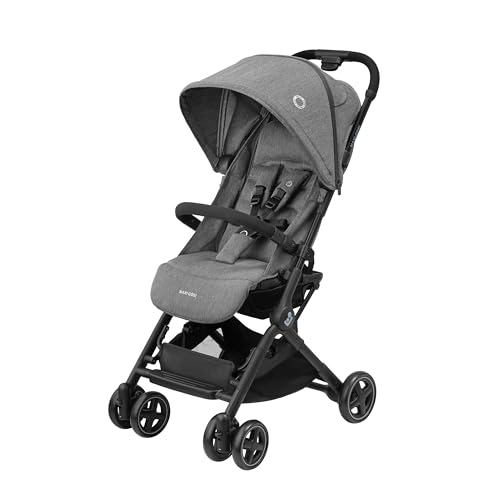What to Look For in a Running Pram
 A running pram is a stroller designed to handle more speed and have wheel suspension. This makes the stroll more comfortable for your baby. They come with a front wheel that can be locked into place to ensure safety, as well as hand brakes for better control.
A running pram is a stroller designed to handle more speed and have wheel suspension. This makes the stroll more comfortable for your baby. They come with a front wheel that can be locked into place to ensure safety, as well as hand brakes for better control.
The majority of pelvic floor physical therapists recommend that babies are nine months old prior to starting buggy running. However every child is unique.
Safety first
It’s a pleasure to incorporate your child into your fitness routine, pushchairs however safety should always be the first priority. Be sure to select safe, quiet roads or wide paved footpaths and stick to the daytime when your baby is most relaxed. Babies can be very fussy with a full tummy so it’s important to plan your run around their feeding times to ensure a smooth, trouble-free experience. Essential features such as a 5-point harness and a handbrake will ensure your baby’s safety while you jog and will help you maintain control, especially when you’re speeding and may need to quickly brake.
Running prams are an excellent choice for parents who enjoy a good cardio workout. It doubles the calories-burning outdoor exercise and precious bonding time, and you’ll be inspired to keep going even as your child gets bigger. You might be tempted to compare your jogging speed alone with your jogging pace, but keep in mind that pushing a baby with their equipment puts more stress on your legs. If you’re planning to push yourself harder look into investing in a specialised pram for jogging with air-filled tyres that offer shock absorption and smooth bumps.
Stability
If you’re running with an infant Carriages in a pram, stability is essential to ensure your enjoyment and the safety of your infant passenger. Choose a stable and dependable pram with big wheels capable of rolling on any surface and absorbing the impact of bumps, as well as a locking front wheel that can improve maneuverability at higher speeds. Make sure you choose a model with air-filled tyres to keep the pressure up and decrease the chance of punctures.
The right pram allows you to maintain your natural running posture without stooping or leaning too far back. This can lead to aches. It’s also important to find the right balance between pushing hard and slowing down so that you do not put too much strain on your hips, knees or back.
Pick a model that comes with adjustable handlebars for your height, to improve your comfort and safety. This will help you avoid having to lower your feet while running, and ensure that your wrists don’t become too stressed.
There’s no cookie-cutter answer for when your baby will be ready to move out of the pram, however, involving them in exercise early on can help them develop the confidence to be independent and set the foundations for an active lifestyle. It’s a great way to spend time with your child and get them used to being outdoors.
Accelerate
The best running prams provide a smooth and steady ride at a rapid pace. The front wheel is typically pivotable, which permits easy maneuvering around town or when using the pram every day. It can also be locked in a fixed location for security when traveling at a high speeds. The back wheels are usually large and have suspension to smooth out bumps and lessen the impact on your child. They should be made from sturdy and puncture-resistant materials.
Making your child love to exercising with you is an amazing feeling for parents. Starting the process at a young age with a running stroller can help them maintain a healthy lifestyle for the rest of their life. However, it’s important to keep in mind that running with a pram distinct from running solo and while you may be able to clock up long runs at the same speed but your endurance is likely to be affected and your child might become overwhelmed.
To avoid overdoing it, we recommend limiting your jogs to around 6km, until you’re sure that your baby is comfortable in their jogging pushchair stroller. Some babies may be able to handle more distances earlier, but we’d advise consulting with your pediatrician or family physician to ensure that your child is ready for this type of workout. Also, if you’re planning to push your child uphill, it’s best to start this after you’ve had an adequate amount of experience on flat surfaces at a brisk speed. It is also possible to consider an all-terrain stroller with large, high-traction tyres. This will let you deal with dirt, roots, and other natural obstacles.
Comfort
You’ll also want to ensure that your child is as comfortable as possible. This could be a system that absorbs the impact and reduces bumpiness, or air-filled rubber tires with the same feel as bike tyres, but with no danger of punctures.
It’s also crucial to choose the right time for your run, since babies are usually content after a nap or a feeding. It’s also worth considering the kind of surface you’ll be using – damaged paths can be a nightmare for young pram runners, while smooth surfaces are easier to navigate at a faster speed.
Running prams are ideal for getting back into shape and keep your baby alongside you for your most memorable adventures. Some have flexible designs that can convert between a running pram, regular pram, and bike trailer which means you can continue to accompany your child on family excursions as they grow. But remember that incorporating your child in exercise isn’t just about boosting their health and well-being, it’s also about building their independence and empowering them to explore the outdoors independently.

 by marijefferies
by marijefferies